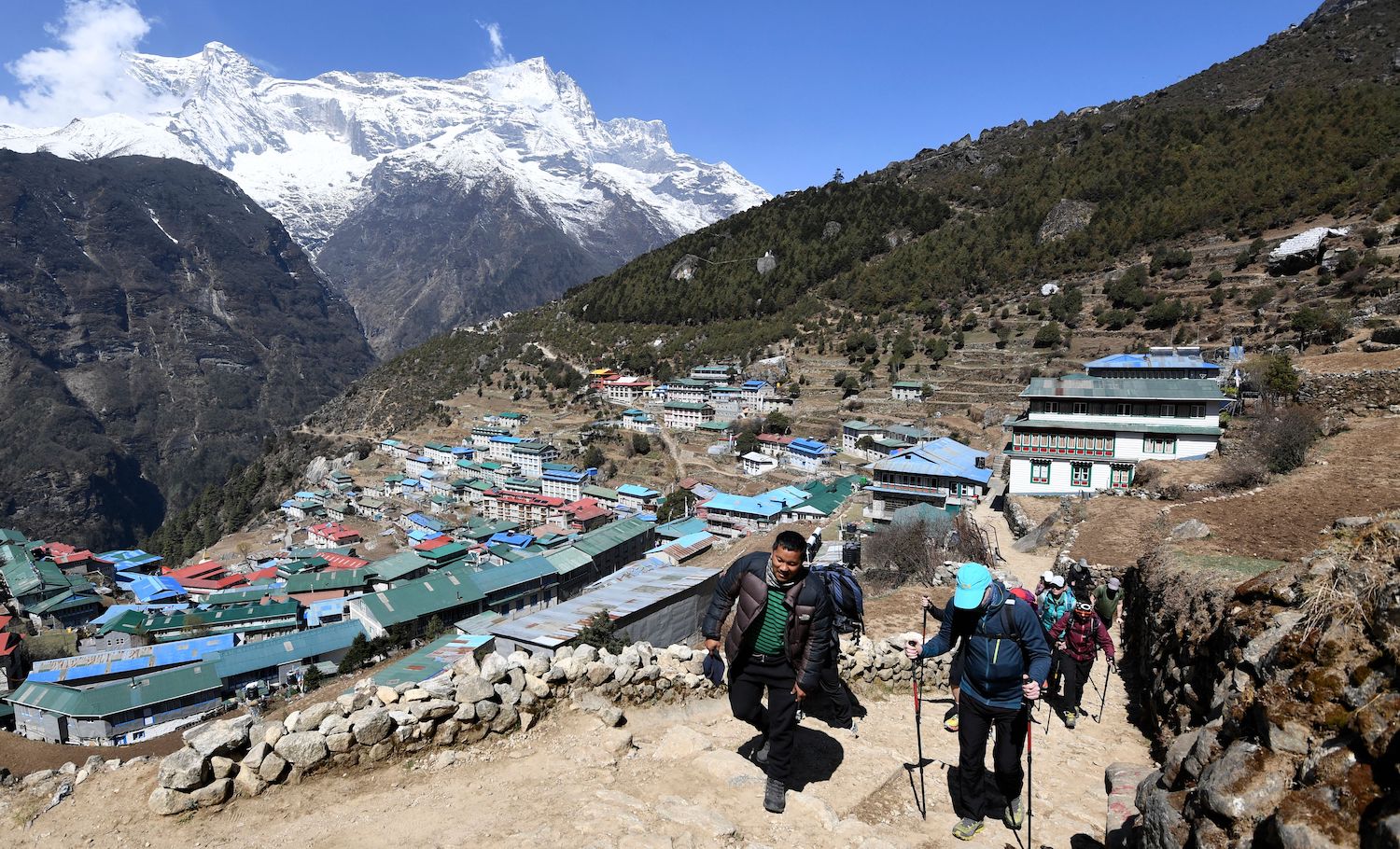Everest Base Camp Is In The Midst Of A COVID-19 Outbreak
4:28 PM EDT on April 30, 2021

Over the past decade, Mount Everest has been beset by a steadily increasing amount of climbers, with a record 382 summit permits awarded in 2019. The pandemic wiped out the numbers for 2020, since peak Everest summit season stretches from mid-April to late May, but this year, tourists have flocked back to the (allegedly) tallest mountain in the world at a rather ominous time. The COVID-19 situation in the Himalayas is worse now than it was one year ago, yet 2021 could be Everest's busiest year on record. You can probably see where this is going.
Everest sits astride the Nepal-China border, and since China has closed off access to its side because of the coronavirus, the already-more popular Nepal route has become the only way for climbers to get to the mountain. Nepalese authorities decided to open Everest up for a full spring climbing season this past winter, when COVID cases subsided to their lowest point of the pandemic. Tourism is a critical part of Nepal's economy, and only 47,000 people visited in 2020 compared to the 12 million who came a year earlier.
"We have no other options," Nepal tourism chief Rudra Singh Tamang told the New York Times. "We need to save the mountaineering economy." Climbers initially had to isolate for seven days upon reaching Kathmandu, though Nepalese authorities relaxed that restriction right as the season began, mandating only a negative test result. That regulation solves some of the worry of infections being imported into the country, since the trek from the capital to Base Camp takes over a week. Even then, climbers told Outside magazine that enforcement of any restrictions was "virtually nonexistent."
The mountain's opening didn't convince everyone to risk getting caught in a possible COVID surge, and several prominent outfitters canceled planned treks to Everest. "We don’t have confidence in Tibet opening for the spring," Alpenglow Expeditions founder Adrian Ballinger wrote. "We don’t believe we can safely run an Everest climb in the current circumstances from the Nepal side." Still, the Nepalese government handed out 408 permits to foreign climbers, up from 2019's all-time high. A full Everest season would happen, damn the consequences.
Those consequences are here: Base Camp is in the midst of an outbreak. The first reported positive case came last Wednesday, when a Norwegian climber had to be airlifted to Kathmandu. He was quickly followed by at least three other COVID-positive people. "We can be almost sure there have been other cases already this year that were misdiagnosed or hidden, and that there will be more," Ballinger told the Washington Post. Roughly 1,000 people—climbers, but also porters, cooks, and guides—are jammed together at Base Camp, which means there are ideal conditions for the disease to spread in one of the most isolated parts of the world, at a time when all local healthcare systems are strained to the breaking point. ExplorersWeb reported that at least 20 people had been helicoptered out, and someone at Base Camp ominously told Everest blogger Alan Arnette "the situation is much worse than anyone knows in the outside world."
The problem seems to be compounded by Nepalese authorities' denial that a problem exists on Everest, even as the rest of country has returned to a lockdown. Tourism officials have continued to insist that most evacuations and reports of illness are not COVID-19, but pneumonia. ExplorersWeb also reported that the government has also threatened to pull future permits from any team or organization "if they spread news of the COVID outbreak at Base Camp," while also threatening similar penalties to those who post unflattering photos of crowds or trash.
Still, despite all the ominous signs—helicopter pilots are reportedly evacuating an average of eight people per day—climbers continue to arrive in Base Camp, including famed alpinist and ultrarunner Kilian Jornet. With Nepalese authorities fixated on suppressing all the information they can, and hundreds of antsy climbers already committed enough to travel all the way to the foot of the mountain, it seems the season won't be called off. Some teams are booking it out of Base Camp and rotating up the mountain faster than expected, which might solve the COVID-19 problem while simultaneously making it harder for climbers to summit a mountain that killed 11 people in 2019.
If you liked this blog, please share it! Your referrals help Defector reach new readers, and those new readers always get a few free blogs before encountering our paywall.
Staff Writer
Stay in touch
Sign up for our free newsletter




